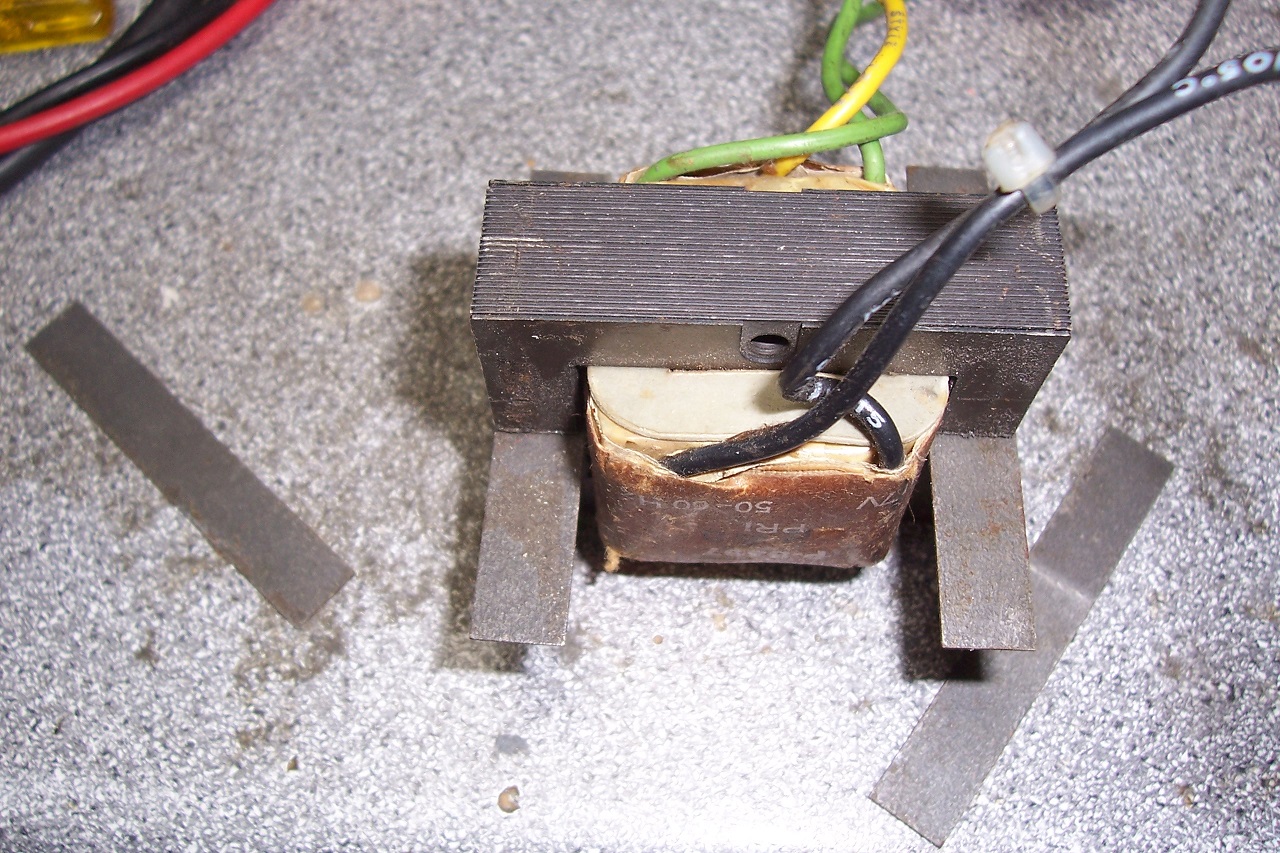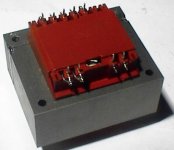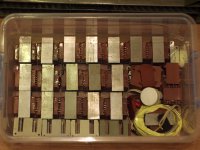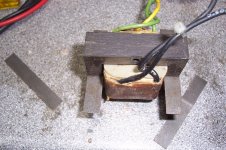I doubt it, at least for a bandsaw: there is the stability issue, which means that in general (at the DIY level anyway), a disc will tend to take away more than its theoretical cutting width.I wonder whether something like these rotary cutoff disks might be a better way than using a bandsaw or hacksaw [/url]
For steel work, diamond is (in principle) not recommended. If the HSS ones are thin enough, and if you manage to limit over-cutting, they could work.
Wire cutters could also be an option
a band saw would be better but its going to leave the cross section of the core completely shorted.
you may need to acid etch the exposed cut to get eddy current losses down to acceptable levels.
for larger transformers a 1/16th" thick cut off disk would be appropriate, and if you know what you're doing, you can get a gap that is about 5/64" wide with one of those disks, even in steel 3/4th inch thick.
I would recommend building a table saw to hold your angle grinder for such a task.
you may need to acid etch the exposed cut to get eddy current losses down to acceptable levels.
for larger transformers a 1/16th" thick cut off disk would be appropriate, and if you know what you're doing, you can get a gap that is about 5/64" wide with one of those disks, even in steel 3/4th inch thick.
I would recommend building a table saw to hold your angle grinder for such a task.
Here is the result of a test I made: since a gap machined with DIY tools tends to be too large, I had the idea of reducing it by introducing some iron.
There are few options for doing that, the simplest being the insertion of an iron blade (another would be to fill the gap with a composite of iron filings):

At first sight, it looks like a completely daft idea: the plain metal sheet orthogonal to the lines of flux will act as the epitome of a shorted turn, but trying it costs nothing, and that's what I did.
The inductance of the secondary went from 30mH to ~45mH, a modest yet valuable improvement.
The problem here is that the slot is just too small to receive two blades (well, in fact not really too small, a bit larger actually but since the gap was hand-sawn, it is irregular and the second blade was blocked at the first asperity).
To test the effect of the eddy currents, I used my lab amp to inject a 100Hz, 1.3A current in the secondary (it is rated at 700mA). It buzzed and rattled like hundred saucepans, but surprisingly the iron in the gap didn't show any detectable temperature rise, so that's safe from that point of view.
Of course, in actual use the blade would need to be secured with epoxy or silicone resin.
I also measured the losses with/without: the tan δ was initially ~0.08 and it rose to 0.15 with the additional iron, which would be rather disastrous for many applications, but for a power filter it doesn't really matter since the igain in reactance more that offsets the losses.
By slotting the blade, a reduction of the losses would be possible.
There are few options for doing that, the simplest being the insertion of an iron blade (another would be to fill the gap with a composite of iron filings):
At first sight, it looks like a completely daft idea: the plain metal sheet orthogonal to the lines of flux will act as the epitome of a shorted turn, but trying it costs nothing, and that's what I did.
The inductance of the secondary went from 30mH to ~45mH, a modest yet valuable improvement.
The problem here is that the slot is just too small to receive two blades (well, in fact not really too small, a bit larger actually but since the gap was hand-sawn, it is irregular and the second blade was blocked at the first asperity).
To test the effect of the eddy currents, I used my lab amp to inject a 100Hz, 1.3A current in the secondary (it is rated at 700mA). It buzzed and rattled like hundred saucepans, but surprisingly the iron in the gap didn't show any detectable temperature rise, so that's safe from that point of view.
Of course, in actual use the blade would need to be secured with epoxy or silicone resin.
I also measured the losses with/without: the tan δ was initially ~0.08 and it rose to 0.15 with the additional iron, which would be rather disastrous for many applications, but for a power filter it doesn't really matter since the igain in reactance more that offsets the losses.
By slotting the blade, a reduction of the losses would be possible.
Attachments
I have a home-made inductancemeter capable of also displaying the losses. BTW, 1/tanδ=QHow did you measure the tan delta?
It all depends on the exact dutyWhat would be an upper limit for tan delta for other duties?
- Status
- This old topic is closed. If you want to reopen this topic, contact a moderator using the "Report Post" button.
- Home
- Amplifiers
- Power Supplies
- Gapped power transformer as a choke


